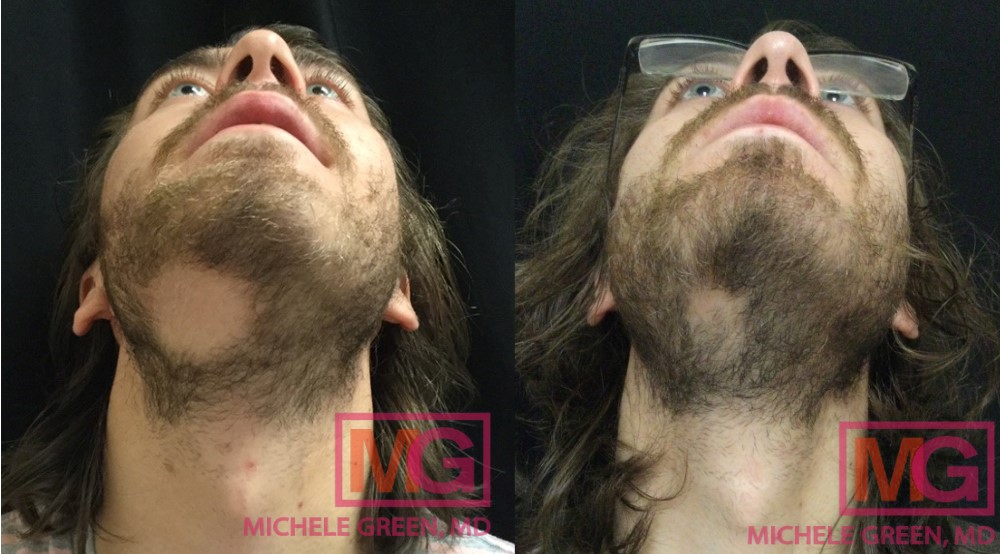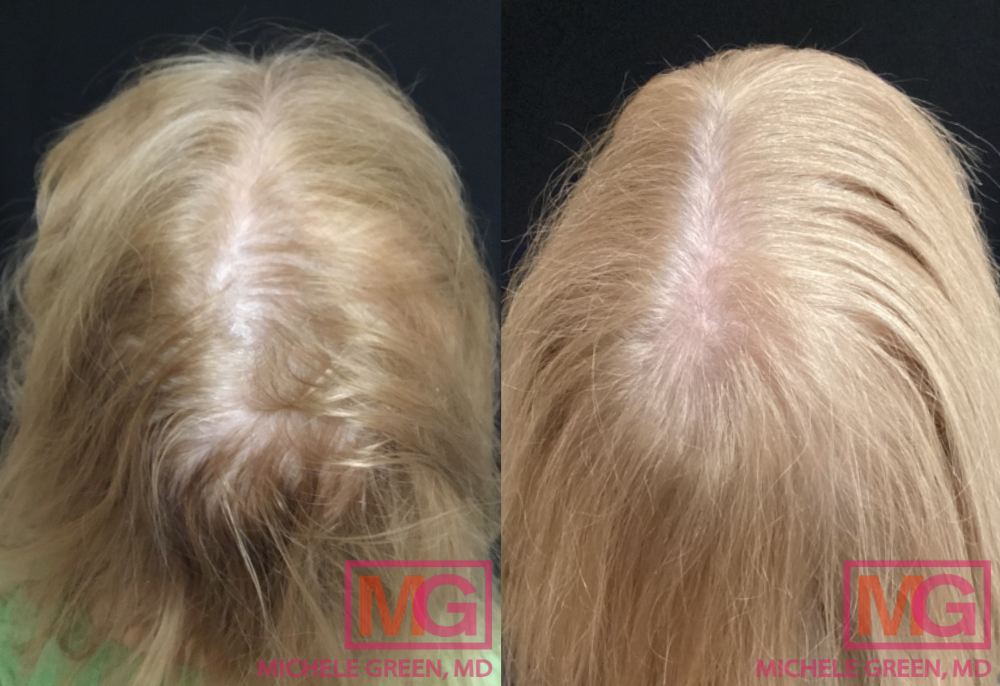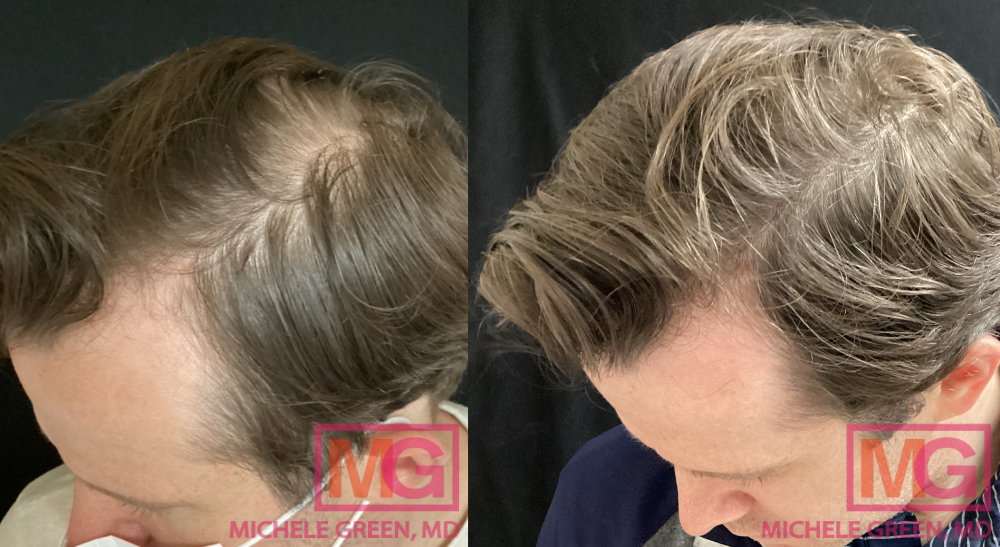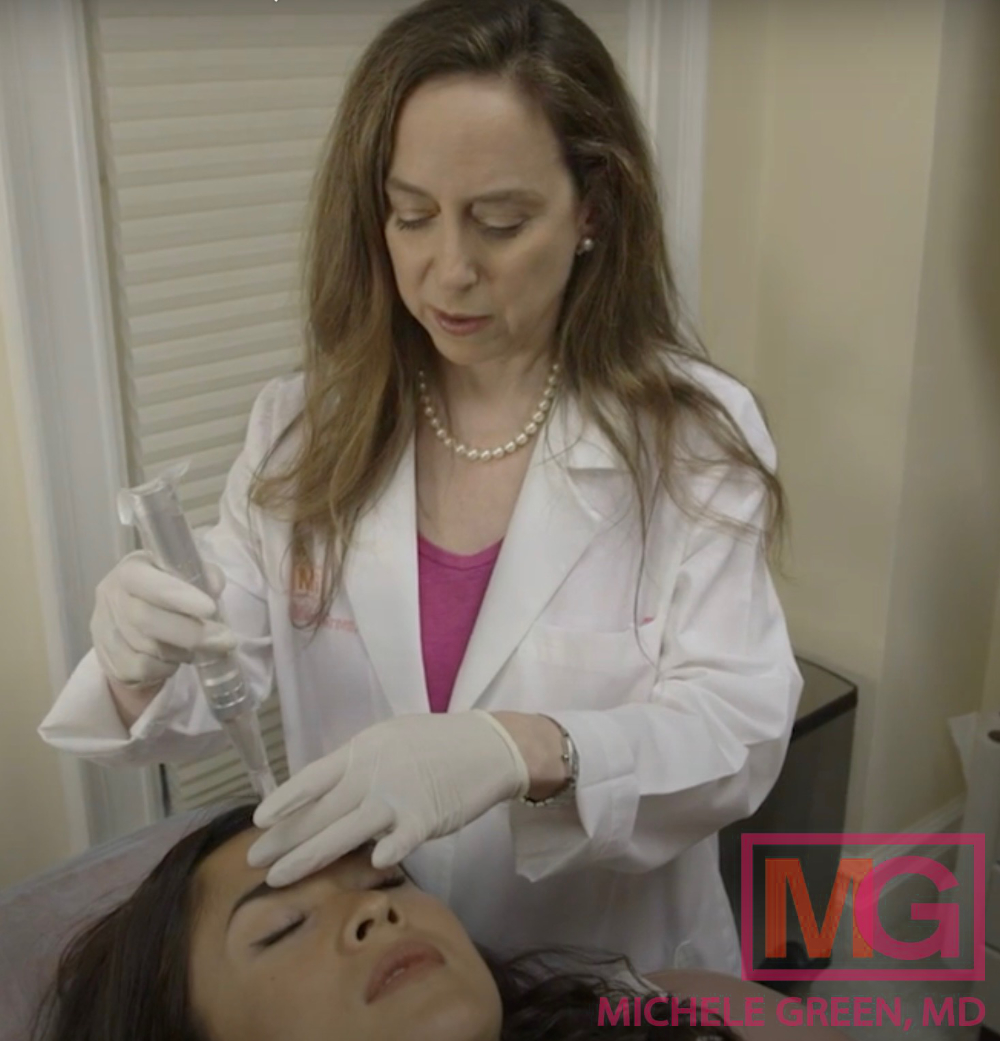Finding a Dermatologist for Hair Loss
According to the American Academy of Dermatology, more than 80 million Americans experience hair loss or thinning. While hair shedding, hair thinning, and a receding hairline are common conditions, many patients still find hair loss distressing, leading them to wonder: How do I stop hair loss from occurring? The most crucial first step in developing an effective treatment plan for hair loss is to identify the underlying causes of hair loss. Most commonly, patients may experience hair loss due to genetic conditions, such as androgenetic alopecia (male pattern hair loss and female pattern hair loss) or alopecia areata, stress-related conditions, such as telogen effluvium, malnutrition or anorexia, medications, fungal infection, bacterial infection, hairstyles (traction alopecia), Polycystic Ovary Disease, vitamin deficiencies, Trichotillomania, or hormone imbalance due to puberty, pregnancy, or menopause. Without knowing the root cause of the hair loss that is occurring, it is impossible to prescribe the right medication, supplement, or treatment option, which is why the best first step for hair loss treatment is to schedule a consultation appointment with an expert board-certified dermatologist, Dr. Michele Green.
Dr. Green offers many treatment options at her New York City dermatology office, depending on the type of hair loss you are experiencing. First, Dr. Green will perform a comprehensive examination of the hair and skin, including blood tests and a scalp biopsy, to determine the cause of the hair loss and develop an individualized treatment plan tailored to your needs. For some patients, the ideal treatment option may be a topical treatment, such as Rogaine (topical Minoxidil) or Spironolactone. Oral medications, such as finasteride, can be prescribed by a dermatologist in combination with topical treatments. Topical and oral medications can also be combined with in-office treatments, such as platelet-rich plasma injections (PRP) or low-level laser therapy, to strengthen the hair follicles, increase blood flow, and promote new hair growth. Dr. Green can also recommend the best hair products, such as shampoos and conditioners, that will protect from additional hair shedding or hair thinning. To get started on your path to hair care and hair regrowth, schedule your initial consultation with Dr. Michele Green.
With over 25 years of experience in treating a wide range of medical and cosmetic dermatological concerns, Dr. Michele Green is renowned for her ability to create individualized treatment plans tailored to each of her patients. Generating unique skincare plans to address various concerns, including hair loss, hyperpigmentation, acne breakouts, acne scars, fine lines, wrinkles, high skin laxity, and more, Dr. Green has been recognized for her exceptional work in such publications as Castle Connolly, Super Doctors, and New York Magazine.
Should I see a dermatologist for hair loss?
Dermatologists are highly experienced in treating hair loss conditions. In addition to treating skin conditions such as acne breakouts, acne scars, hyperpigmentation, fine lines, wrinkles, facial volume loss, and uneven skin texture, dermatologists are highly skilled in diagnosing hair loss conditions and prescribing medications or treatment options that will best combat the symptoms of hair shedding. Dr. Green, in particular, is well-known for the care she takes when diagnosing patients and developing individualized treatment plans to promote hair regrowth, thicken and strengthen the hair follicle, and prevent or slow future hair shedding.
Can a dermatologist diagnose hair loss?
One of the major benefits of seeking treatment from an expert dermatologist for hair loss conditions is that the dermatologist can accurately diagnose the root cause of the hair loss. During your initial consultation, Dr. Green will begin by asking you about your medical history, including any medications you are taking, medical conditions, surgeries, and recent travel. Next, Dr. Green will conduct a thorough examination of the skin, hair, scalp, and nails to try to determine the cause of hair loss on the scalp. In some cases, Dr. Green may request a comprehensive panel of blood work to determine if hormonal changes, thyroid issues, or other autoimmune disorders cause the hair loss. Additionally, a fungus culture or biopsy may be requested for thorough testing.
What are the different types of hair loss?
The most important step in beginning hair loss treatment is receiving an accurate diagnosis of the root cause of your hair loss. Hair shedding and thinning can occur due to genetic predisposition, stress, auto-immune system disorders, thyroid problems, cancer treatment, hormonal changes, scarring alopecia (cicatricial alopecia, lichen planopilaris), or as a side effect of some medications. Below are some of the most common types of alopecia and hair loss medical conditions that lead to bald spots, hair loss, scalp psoriasis, or rapid hair shedding:
Androgenetic Alopecia
Androgenetic alopecia, also known as female or male pattern baldness, is a hair loss condition associated with elevated levels of the androgen hormones, which bind to the hair follicles and damage them. In men, male pattern hair loss typically begins with hair thinning at the temples, resulting in a receding hairline that creates the characteristic “M” shape. Hair loss continues on the crown of the head and can continue to worsen over time. In women, female pattern baldness can result in hair thinning along the top of the head, causing the part of the hair to widen. The condition can begin affecting both men and women in their 20s and 30s, and its symptoms can become more pronounced with age. The risk factors for developing androgenetic alopecia are yet unknown, though researchers believe that there is a strong genetic component.

Alopecia Areata
Alopecia areata is an autoimmune disease that occurs when white blood cells damage the hair follicle, causing new hair growth to slow and the follicle to shrink. Characterized by bald patches that appear most commonly on the head (though the condition can develop anywhere on the body), alopecia areata can occur suddenly. However, it is not associated with stress-related situations. Researchers believe that this autoimmune disorder has a genetic component, and while some patients can experience alopecia areata followed by full hair regrowth, for others, hair loss may be permanent. For the most part, patients with alopecia areata experience small patches of hair loss the size of a quarter. However, for others, the extent of hair loss may be more extreme. Alopecia areata can affect patients of any age and gender and frequently comes on quickly, within the span of a few days.
Telogen Effluvium
Telogen effluvium is a hair loss condition caused by extreme stress or shock, which triggers hair to enter the resting phase of hair growth (known as the telogen phase) prematurely. As a result, a large number of hairs enter the shedding phase at the same time — sometimes, as many as 70% of the hairs on the scalp can be shed at once, leading to noticeable hair thinning and shedding. Stressful events that can trigger telogen effluvium include:
- Severe illness, such as chronic illness or high fever
- Childbirth
- Overactive thyroid
- Severe infections
- Severe psychological distress
- Major surgery or injury
- Losing weight quickly, such as crash diets or anorexia
- Some medications
Typically, hair will regrow in three to six months once the stressful event has been resolved. However, seeking treatment from a dermatologist can help speed up the regrowth process and ensure the overall health of the hair follicles.

What is the best hair loss treatment?
When it comes to treating hair loss, there are many treatment options available at Dr. Michele Green’s New York City dermatology office. There are many over-the-counter treatment options available, such as supplements like biotin. However, the most powerful and effective treatments are those prescribed or performed by an expert, board-certified dermatologist, such as Dr. Green. Dr. Green will often begin by turning to the following treatment options:
PRP for Hair Loss – Platelet-rich plasma (PRP) injections are a highly effective treatment option for strengthening the hair follicles and activating growth factors to increase hair growth. The solution is derived from the patient’s blood and centrifuged to isolate the platelet-rich plasma, which, when injected into the scalp, nourishes and regenerates the hair follicles. The effects of the treatment include a longer growth phase and thicker hair follicles, resulting in denser, healthier hair. PRP can be effectively used for patients who are struggling with telogen effluvium to help boost the hair regeneration process.
Minoxidil (Rogaine) for Hair Loss – Minoxidil is an oral medication originally used to treat hypertension and high blood pressure, but it has since been FDA-approved to treat hair disorders such as alopecia when administered in low doses. The medication works by increasing blood flow to the hair follicles, which prolongs the growth phase of the hair and helps improve hair density. Minoxidil can also be applied topically, although topical Minoxidil may negatively impact hair texture. When determining the dosage for oral Minoxidil, it is always best to seek treatment from an expert dermatologist, such as Dr. Green.
Finasteride (Propecia) – Finasteride is another topical medication that works to boost the growth of the hair follicles for new hair growth. The medication works by inhibiting the production of the hormone that is partially responsible for hair loss, dihydrotestosterone (DHT). By reducing the functioning of DHT, hair loss is slowed by as much as 70%.
What shampoo do dermatologists recommend for hair loss?
Patients who are experiencing hair loss should look for a shampoo that will not cause further damage to the hair follicles. Some shampoos contain harsh ingredients that can cause breakage to the hair shaft or irritate the scalp, which worsens hair loss. Dr. Green recommends avoiding shampoos that contain ingredients such as isopropyl alcohol, sulfates, parabens, and triclosan, as these ingredients can cause scalp irritation and dry hair.
What is the best shampoo for hair loss, according to a dermatologist?
Patients often wonder, “Which dermatologist shampoo is best for hair loss?” The best shampoos for patients experiencing hair loss are moisturizing and volumizing, which can help make the hair appear thicker and denser. Dr. Green recommends that patients look for shampoos with the ingredient ketoconazole, which is often found in dandruff shampoos and can also help reduce inflammation and irritation on the scalp. For more recommendations, schedule an appointment with your healthcare provider.
What happens at a dermatologist appointment for hair loss?
During your first dermatologist visit, Dr. Green needs to learn more about you so that she can develop an individualized treatment plan tailored to your specific areas of concern. Dr. Green will typically begin her first appointment by reviewing your medical history, which includes your history of skin problems, past treatments, medications (including over-the-counter, supplements, and prescribed medications), family history of skin concerns, and your current skincare routine. When it comes to treating hair loss, understanding the underlying cause of your hair loss is essential before creating a treatment plan, as different types of hair loss respond to different treatments. Once Dr. Green has determined the cause, she will recommend a treatment plan that will be best for you. Most patients can benefit from non-surgical treatment options, including PRP injections, topical medications, oral medications, corticosteroids, and low-level laser therapy. Some patients may require a surgical procedure, such as a hair transplant, to fully achieve their aesthetic goals. Whatever you may need, Dr. Green can provide safe and effective hair loss treatment for you.

Is hair loss a dermatology issue?
While many patients associate dermatology with skin concerns such as acne, hyperpigmentation, and other signs of the natural aging process, a dermatologist is also a specialist who can help with hair loss conditions. There are many different types of hair loss, and Dr. Green is an expert in diagnosing the underlying cause. Once the cause of the hair loss is known, Dr. Green will develop a treatment plan that will strengthen the hair follicles, slow the rate of hair loss, and—depending on the condition causing the hair loss—promote hair regrowth.
How much does it cost to see a dermatologist for hair loss?
The total cost of hair loss treatment depends on several factors, including the type of hair loss being addressed, the treatments used, and the type of facility at which you receive treatment. After Dr. Green has diagnosed the underlying condition that is responsible for the hair loss, she will make a recommendation about which treatment option will be most effective for you. Some patients may require a combination of treatments for optimal results—pairing oral medications with in-office treatments, such as PRP injections, for example. The total cost of treatment will depend on the specific treatments used and whether they are combined. Following your initial consultation with Dr. Green, her office can provide a more accurate estimate of the total cost once the treatment plan has been developed.
When to see a dermatologist for hair loss
Patients who begin to experience hair loss or hair thinning should seek out a dermatologist as soon as they begin to notice symptoms. Hair loss treatment can help to strengthen hair follicles and slow the rate of hair loss. However, most non-surgical treatments cannot fully repair damaged hair follicles, meaning that if you wait for hair loss to advance, it may be too late to restore the damaged hair follicles fully. Dr. Green provides patients with long-lasting solutions to help maintain the strongest, thickest, healthiest hair possible.
Do you go to a dermatologist for hair loss?
Many patients ask, “Do you go to a dermatologist for hair loss?” and the answer is yes! Visiting a board-certified dermatologist, such as Dr. Michele Green, is the best way to treat hair loss conditions. A dermatologist will start by determining the root cause of your hair loss to make a recommendation on the treatment option that will be the most effective for you. While ordering over-the-counter products from places like “Hims” might feel more convenient, visiting an expert dermatologist will provide more dramatic, long-lasting results.

How to get started with hair loss treatment today
Hair loss is extremely common, affecting approximately 80 million Americans. But even so, hair loss can be very distressing, causing patients to feel increased anxiety or lower self-esteem, leading many to seek a solution. With many hair loss treatments available over-the-counter or advertised by companies like “Hims,” it can be difficult to know which hair loss treatment option is the safest and most effective. Additionally, using the wrong product can worsen hair loss and damage to the hair follicles. That is why it is essential to seek treatment from a board-certified dermatologist, such as Dr. Michele Green, who has been treating patients in her New York City dermatology office for over 25 years. Dr. Green conducts a thorough examination of the skin, scalp, hair, and nails to determine the root cause of hair loss and provide a treatment plan that best meets patients’ needs.
Dr. Michele Green is an internationally renowned board-certified dermatologist with over two and a half decades of experience providing her patients with the best non-invasive treatment options. Dr. Green takes a holistic approach, embracing a less-is-more philosophy, and creates customized skincare routines and treatment plans that cater to the unique concerns and aesthetic goals of her patients. She is consistently identified as one of New York’s best dermatologists by Castle Connolly, New York Magazine, and Super Doctors for her dedication to her patients and expertise. Please call us at 212-535-3088 or email our New York City-based office today to schedule a consultation with Dr. Michele Green and get started on addressing your hair loss today.
 212-535-3088
212-535-3088